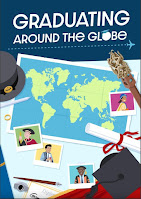This post has been written in the context of the preparation of a text on the teaching and learning of mathematical proof. I noticed some years ago that we need to have a discussion on what we mean by "proof". I now realized that "truth" may deserve some attention as well, especially in the context of expressing in one language what we think in another one.
Proof and truth are inseparable concepts, yet discussions on what can count as proof in the mathematics classroom develop as if the meaning of truth were clear. The meaning and nature of truth seem to be an irrelevant issue in mathematics where true and false are just the two elements of a set where propositions or predicates take value, while the questioning of these meanings and their nature is one of the central subjects of philosophy. As it happens, Kleene’s first chapter to his classic book Mathematical logic (1967) does not spend even a sentence on defining true and false, even though the introduction is dedicated to fixing the formalism of his first chapter. But mathematical logic is not the logic of mathematics insofar as the activity of mathematicians is not reduced to carrying out a formalism. “Actually, the criterion of truth in mathematics is the success of its ideas in practice; mathematical knowledge is corrigible and not absolute; thus, it resembles empirical knowledge in many respects”, wrote Hilary Putman in a brief paper entitled What is mathematical truth? (1975 p. 529). There is something radical in Hilary Putman’s position paper, but it is not without relevance for proceeding with the objective I have in the text I am preparing. More than a science, in the mathematical classroom, mathematics is a practice.
The meaning of the words “true” and “truth” in the mathematics classroom borrows its substance from the vernacular culture and the culture emerging from the interactions among students and with the teacher, and from their management. But, if students in higher education as well as mathematicians maintain a difference between the mathematical meanings of true and truth from the meaning of these words in other scientific practices or everyday life, this is not the case for K-9 learners. Early mathematical conceptualizations develop based on a vernacular culture, and one can reasonably claim that this lasts until the middle of the junior high school when mathematical proof starts to appear as such. Hence, my papers, written in English but first contemplated in French deserve to question whether the translation of the French vrai by the English true carries any semantic significance.
The etymology of true (n. truth), according to the Vocabulaire Européen des Philosophies (2004), goes back to a metaphorical origin in the word tree, which denotes firmness, steadfastness or faithfulness. Its evolution does not exclude this origin but includes other meanings among which are also certain, accurate, correct and mathematical meaning as well (i.e. logical necessity). The order of these meanings may vary from one dictionary to another, or from one edition of the same dictionary to another, but they are all still there. Today, the contemporary use of true/truth puts sincerity and reliability ahead of veracity (ibid. p.1350). Both notions underlie the first meaning proposed by the popular Oxford Advanced Learner’s Dictionary: “the truth [singular] the true facts about something, rather than the things that have been invented or guessed”. Then, a first example is given: “Do you think she's telling the truth?”
The etymology of vrai (n. verité) traces its origin back to the Latin word veritas whose paradigm is normative: it refers to the correctness and the validity of a rule; it is the legal truth that a legitimate institution locks and preserves (ibid. p.1342). The evolution of its meaning from the Middle ages to the contemporary epoch introduces the producer of the statements claimed true, with the assessment of their sincerity and correspondence – adequacy, conformity – to the thing. The latter dominates the former as witnessed by the popular French dictionary Le Robert which states: Vérité [n. f.] What the mind can and must give its assent to (as a result of a relationship of conformity with the object of thought, of an internal coherence of thought): sincerity is not absent but comes as the sixth and last meaning in the list.
I take the case of English and French, but in fact we must go beyond these cases by questioning the languages and background cultures of all research projects on the teaching and learning of mathematical proof. The epistemological differences silently shape research, while being aware of them should lead to a more sophisticated understanding of each other’s work and results. This is a general phenomenon known from research on comparative literature: “no philosophical argument or picture of the world can be divorced from the language, style, rhetoric, means of presentment and illustration in which it is stated” (Steiner, 1996, p. 157). In the case of mathematics, the publications and communications to which I have had access, do not suggest insurmountable conflicts or contradictions across the different cultures and history of truth: rather they present differences in the relative weights given to its various dimensions. We will benefit from being aware of the influence of these differences on the way we approach research.
Eventually, the investigation which started by noticing possible translation issues ends up inviting us to consider the vernacular epistemology as complementary to the attention classically paid to the role of the vernacular language. In other words, the tension between vernacular languages and the mathematical language – which we could pretend to be universal – should lead to questioning the culture that proof and truth carry with them, and despite which the socio-mathematical culture and norms must find their place in the school mathematics.
Confident in the wisdom of Donald Davidson’s (1996) warning that it is folly to try to define truth, I will not try to answer Hilary Putmann’s question, What is mathematical truth?, not even limiting its scope to the sole purposes of research in mathematics education. But the word truth and the concept it labels, do not stand alone; it is tightly related to the concept that the word proof refers. I am willing to take this relation into account, and I concur with Viviane Durand-Guerrier (2008, p. 373) when she asserts the “relevance of the distinction and relationship between truth and validity in mathematical proof for mathematics education”, taking on board the differences between common sense and mathematical logic, and generally “emphasizing the articulation between syntax and semantics” (ibid.). Her argumentation builds upon Alfred Tarski’s (1944) solution to “[the problem of] giving a satisfactory definition of [truth], i.e., a definition which is materially adequate and formally correct.” (ibid. p. 341). Tarski first defines satisfaction: “given objects satisfy a given [sentential] function if the latter becomes a true sentence when we replace in it free variables by names of given objects” (ibid. 353). Then comes the definition “of truth and falsehood simply by saying that a sentence is true if it is satisfied by all objects, and false otherwise” (ibid.) Tarski’s definition grounds the deduction theorem which bridges syntax and semantic, truth and validity. But, taking this perspective is not enough in the case of early learning since this definition requires that sentences are elements of “[a language] whose structure has been exactly specified.” (ibid. p. 347). Yet we know it is not the case for language at work at the K-10 level.
To clarify the consequence of having at stake such a teaching context – but even though it may still hold beyond this – I adopt the distinction made by John Langshaw Austin between statement and sentence:
“A statement is made and its making is an historic event, the utterance by a certain speaker or writer of certain words (a sentence) to an audience with reference to an historic situation, event or what not.
A sentence is made up of words, a statement is made in words. A sentence is not English or not good English, a statement is not in English or not in good English. Statements are made, words or sentences are used. We talk of my statement, but of the English sentence (if a sentence is mine, I coined it, but I do not coin statements).” (Austin, 1950, p. 3)
The utterance of a statement requires words and a good command of linguistic rules to produce a sentence true to the communication objective which underpins it; this objective includes semantic adequacy and formal correctness. But, paraphrasing Donald Davidson, we know that most students may not speak the language for which mathematical truth has been defined (ibid. 1996, p. 277). They have to learn the language of mathematicians, becoming aware of the way it deals with mathematical objects, properties and relationships, which are involved throughout the mathematical activity. Acquiring this linguistic competence is key for the success of learning. Moreover, John Langshaw Austin’s introduces a speaker and an audience, in other words the intentional character of the speech act uttering truth, and its social dimension. Hence, aside from coherence and correspondence, the hypothesis – more often than not implicit – of sincerity and steadfastness of the speaker and of the audience must be included.
Although this discussion may be somewhat limited, it sheds light on the difficulty of comprehending the meaning of the words true/truth when taking a step beyond mathematical logic while remaining within the mathematical territory – of which learning mathematics is part. While mathematics as a scientific discipline is universal, mathematical activity is diverse. It embraces the cultural, historical and contextual characteristics of the society in which it develops. This is even more so for its learning and teaching, which are situated mathematical activities framed by institutions and political projects of a society.
I will not dare a definition but I propose four conditions on a sentence to be held true:
- to be ethically minded (sincerity, reliability)
- to be linguistically appropriate (statement vs sentence)
- to be semantically adequate (correspondence)
- to be formally correct (coherence)
Based on what research has shown so far, we can tell that these conditions will not have the same importance within the transition from argumentation at the earliest learning stages to mathematical proof. Nevertheless, these should be considered and assessed against the level of students’ acculturation to the mathematical practice. I suggest that we ought to take on such epistemological and didactical perspectives to revisit the classical issue of defining mathematical proof in order to fit the needs of mathematics learning and teaching.
Aknowledgements: many thanks for their valuable feedback to Viviane Durand-Guerrier, Patricio Herbst, Joel Hillel, and Richard Noss.

